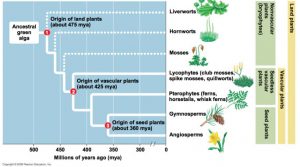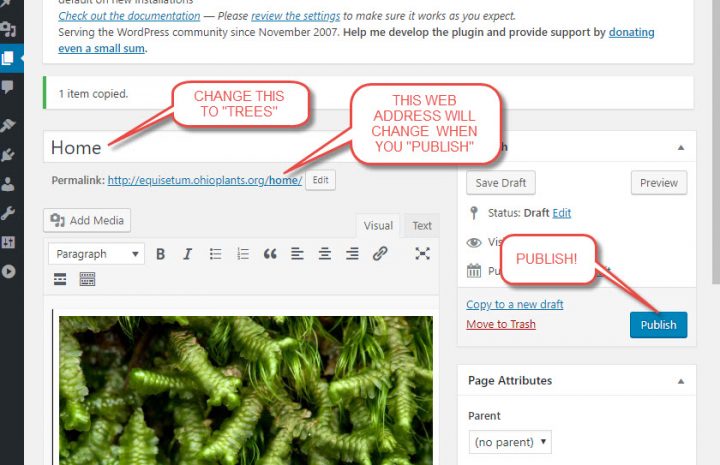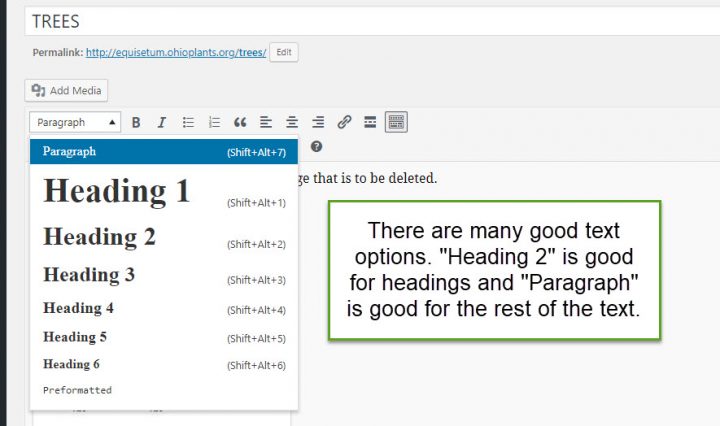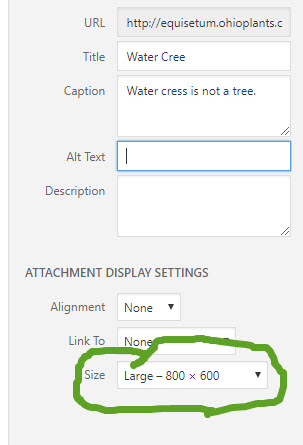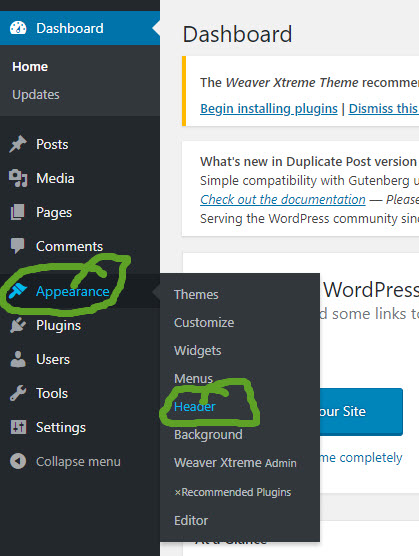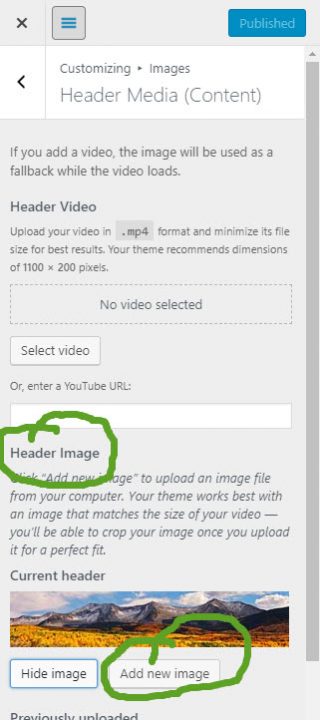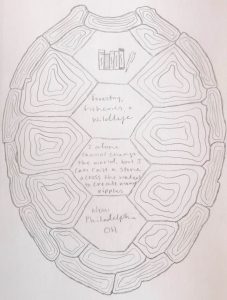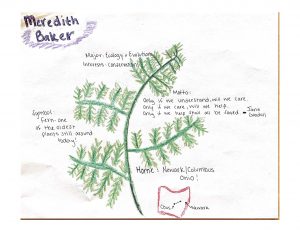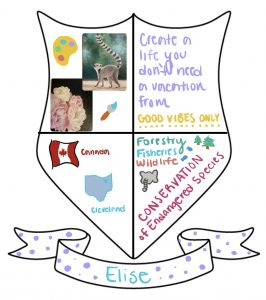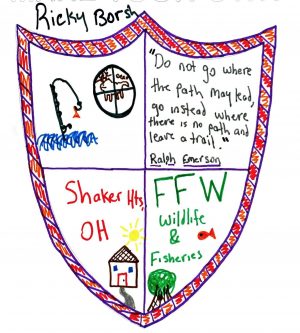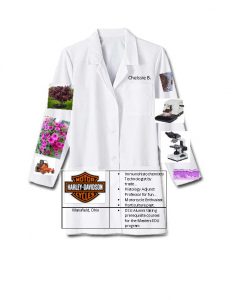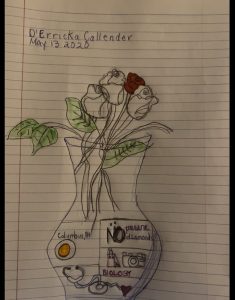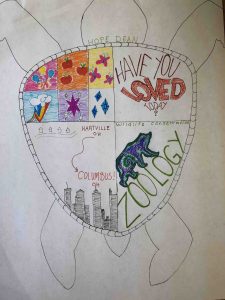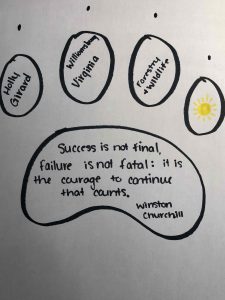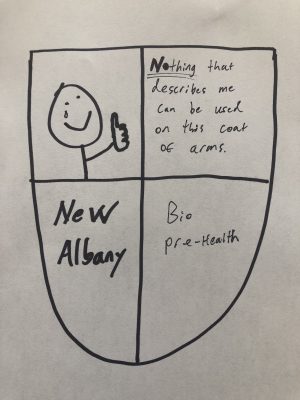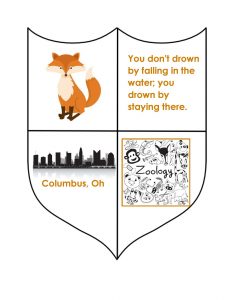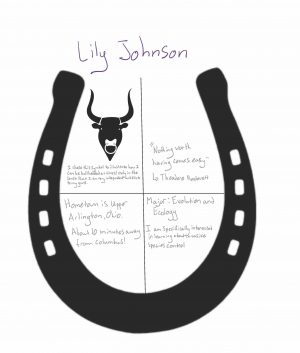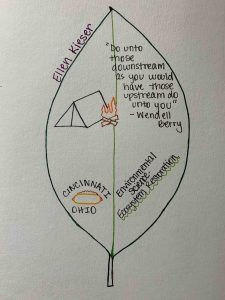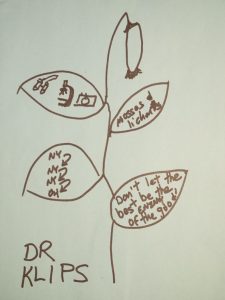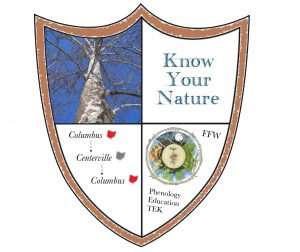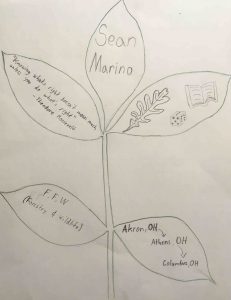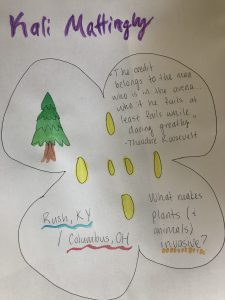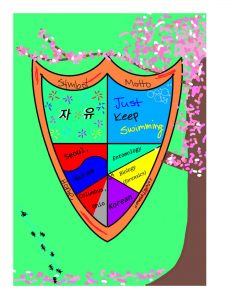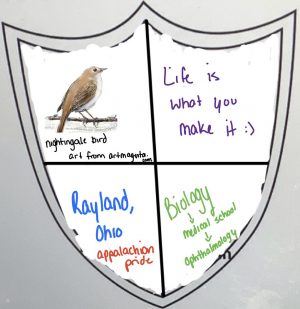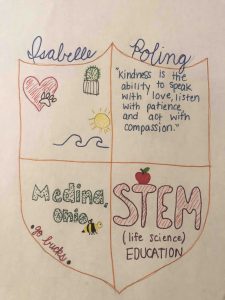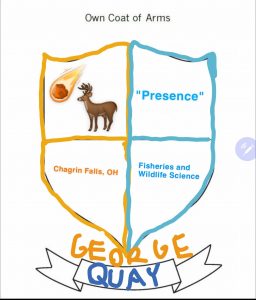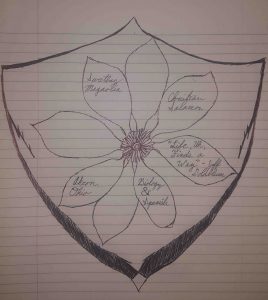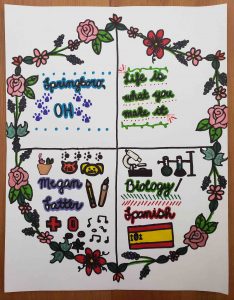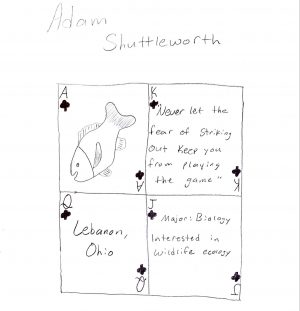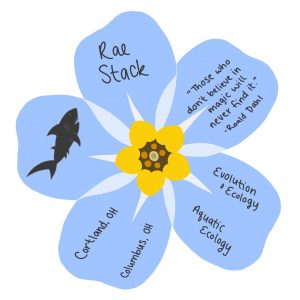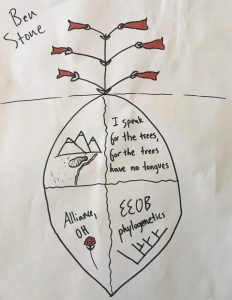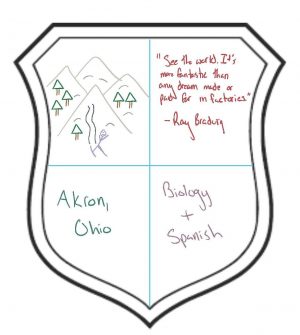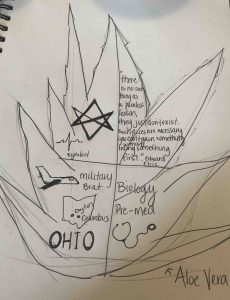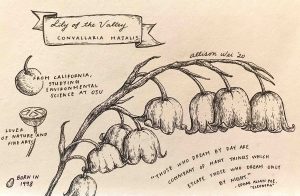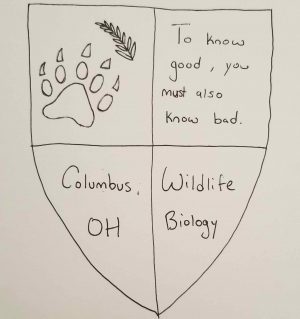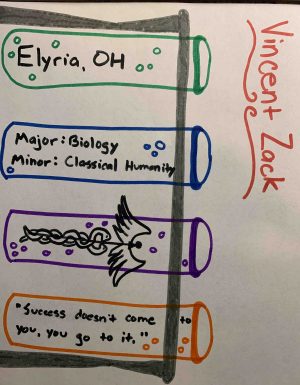FIELD TRIPS PART TWO
Mosses, Ferns, Trees and Shrubs!
(credit: 5 pts. due Sunday June 7, 2020)
Our second field trip was to southeastern Ohio’s Hocking County, a land of forests and sandstone ravines dominated by eastern hemlock and a variety of hardwood trees. We started out at a glade/barrens area with thin msoil in the sun. This spot is home to one of Ohio’s rare plants, cow-wheat. Melampyrum lineare (Orobanchaceae). Here we are pondering the ecology of this and other species on this ridge.
Follow along with us as we share a few of the pertinent botanical features having to do with mosses, ferns, disease threats to our native species, and shrubs! Your assignment is to make parallel observations at your field site(s) and document them on your web site.
Add the following new content to your existing “Field Trips” page. For each of the following topics, discover, identify, and document the specified number of examples that exemplify the topic. These should be new species not featured in previous posts.
-
- Two Mosses. Find and photograph as best you can (yes they are small; that’s part of their charm!) two mosses: one an acrocarp and the other a pleurocarp. Using your 10x hand lens, determine which of the growth form subdivision categories they belong to as denoted in the moss identification videos below. Using the system set forth in the “Moss Identification” videos below, determine which of the 13 topological subcategories each belongs to, and attempt an identification using the online gallery at the Ohio Moss and Lichen Association web site HERE (link). Describe where you found it (location, habitat, and substrate) and why you think it is what you think it is.
- Two Ferns. At Deep Woods we saw a most unusual fern –the so-called “Appalachian Gemetophyte,” a fern that lost its sporophyte during the last ice age but nonetheless manages to persist via asexual reproduction only. We also noticed ferns with different Frond Types, and Frond Dissection Types. Kale explains them in the video below. Additional info on these aspects of ferns are available on the FERNS (link) page of this web site.Do the same at your field sit(s). Discover and photo-document two ferns, and describe their frond type, frond dissection type, and any other features that can be used to identify it or that you found interesting.Identify the fern using THIS PAGE (link) on the “Vascular Flora of Franklin County” web site (also a menu item on this site).
- Threats to Trees. At Deep Woods we saw several trees that have undergone some hardship at the hands of fungal or insect pests. Photo-document TWO trees at your site(s) that have been impacted by disease or predators and describe the problems, and any possible solutions.
- Shrubbery! The woody growth form “shrub” often gets neglected. At Deepw Woods we saw several. Using your text book “Peterson’s Field Guide to Trees and Shrubs,” identify two new shrubs at your site(s). Photo-document TWO of them, explain their identification field marks, and set forth some interesting aspect of their natural or human ecology.
FIELD TRIPS PART ONE
Discover Plants That Display Specific Traits
(credit: 5 pts. due Sunday June 7, 2020)
There are aspects of field botanical study beyond merely listing the plants that occur on a site. These are important in understanding the ecology of the sites as well as stimulating interest in their preservation. During normal iterations of this course, the class visits sites in different regions of Ohio, namely: areas in the west-central portion of the site that are influenced by the calcareous (limey, high pH) nature of the bedrock and soil; and low pH, acidic sites of the Hocking Hill region (SE Ohio). Your instructors have visited these areas this week, and documented some of the things that stood out to us there, to provide a framework for you to make similar observations at your study areas (botanical survey site or any other areas in Ohio that you have access to).
Make a new “FIELD TRIPS” page (by cloning an existing page, not making a new one). For FOUR of the following topics, discover, identify, and document the specified number of examples that exemplify the topic. These should be new species not featured in previous posts.
- Grasses and Sedges. At the wetland at Batelle Darby, we saw two types of graminoids: grasses and sedges. Find examples of each, photgraphically document the vegetative features that you used to distinguish them.
- Invasive Plants (boo, hiss). Find and document two of them; include natural history information about them (where are they from; why are they successful’ what are some control measures; what types of ecosystems do they threaten?, etc.).
- Life Spans. Name and describe/define all 4 plant life spans. Find and document two of them other than the boring old “perennial” life span.
- Lime-loving plants. Find and document two plants that have an affinity to a particular soil or rock type. How do you know this (cite sources). This is based on the Jane Forsyth “Geobotany” article.
- Monocots and (eu)dicots. Find and document two flowering examples of these two great groups of angiosperms; set forth the differences in general and explain how you recognized your two examples.
- Plant-animal interactions (seed dispersal). Find and document two apparent instances of plant adaptations to entice animals to disperse their seeds.
FLORAL FORMULAS
The “floral formula” is a shorthand method of setting forth the details of flower structure. The use of floral formulas helps us see features that tie together members of the same or related families. The various symbols (K for calyx, for example) vary among different instructions for writing formulas, but the overall approach is the same — communicating about flower structure. The instructions here are from an excellent (although outdated) book on plant taxonomy, “Vascular Plant Families,” by James Payne Smith, Jr. (1977) published by Mad River Press.
To view the instructions, with a few example, use the image slider below
(hovering over the image reveals slider arrows)
PART TWO: BOTANICAL SURVEY UPDATE:
FOUR HIGH CC AND FOUR LOW CC SPECIES
(Web site updates due Sunday May 31, credit 10 points)
Now that you’ve been to your botanical survey site a few times and have a good idea what is there (and have started your written report …right??) the world is keen to hear more of what you’ve discovered! Let’s get some practice using the coefficients of conservatism (CC) assigned to each species by Andreas et al. (2002). The CC, with values ranging from 0 to 10, is an estimate of the degree to which a species is associated with high-quality natural communities similar to those which existed in pre-settlement times. Exotic (alien, introduced) species are not assigned CC values.
CC values for all of Ohio’s plants can be found in the Ohio Environmental Protection Agency’s web site. Click on the image below to navigate to the Ohio EPA reports page which includes the CC/FQAI material.
Scroll down on the EPA page to access the Floristic Quality Assessment Index (FQAI) materials. This include the following:
The original FQAI REPORT published in 2004, also available as a direct download HERE (link).
An excel SPREADSHEET published in 2004 using older species names that may in fact be consistent with our older field guides, also available HERE (link).
An html version of 2014 update of the spreadsheet available HERE (link).
Set forth on your web site the list of species you found at your site, along with the CC value for each. Also, compute the Floristic Quality Assessment Index for ther entire site using the formula given in Andreas et al. (2004).
Using the CC data in either of these sources, look over the list of species you have compiled for your site. Select TWO FOUR OF YOUR HIGHEST CC (conservative) species and TWO FOUR OF YOUR LOWEST CC species (weedy plants, essentially). Provide photographs, descriptions, and natural history facts about each of them.
BOTANICAL SURVEY WEB-PAGE LAUNCH
GET POISON-IVY and DESCRIBE YOUR SITE
Due Friday May 29 (credit 10 pts.)
Hats off to everybody for picking a great site for your botanical surveys! (See the entry just below for details about this project overall.) For this web assignment, let’s start a new page devoted to the botanical survey called “Plants of ___” (fill in the blank). Add the following content:
- A paragraph describing the site.
- A map showing the location of the site.
- Plants! Provide both common and scientific names, the latter written properly in terms of capitalization and italics. Photo-document two new trees, two new shrubs or woody vines, and two flowering or fruiting plants that can be identified to species.
- For at least 4 of the plants, include some interesting “fun facts” about their natural history such as human uses for the plant, animal interactions (host plant for certain moths, for example), conspicuous floral displays, etc.
- One more thing; get poison-ivy! Oh, I don’t mean it that way. Locate some (either at your survey site or elsewhere), photograph it, and set forth the features useful in identifying the nasty stuff.
EEOB 2210 LOCAL FLORA BOTANICAL SURVEY
(final written report due June 8, 2020)
Effective stewardship of natural areas depends upon an accurate accounting of the biotic resources, particularly the vegetation, present on a site. The development of a site-specific plant species list, along with a written description of the plant communities that are there (including relevant information about the human and natural ecology of the plants) is often desired by natural resource agencies, landowners, and environmental organizations. This substantial (100 point) assignment is to perform and document a botanical survey like the ones performed by professional field botanists engaged in environmental assessment. The specifications for this project are here (link to .pdf)
BOTANICAL SURVEY INSTRUCTIONS
WEEK 2: FLOWERS!
Flower Analysis Worksheets
(due Sunday May 24)
A fuller appreciation of plant life, and more engaging experience while carrying out identifications of angiosperms, can be gotten by thoroughly examining flowers. Flowers are amazing!
Attentively view the lecture and demonstration material on the Carmen/Canvas FLOWERS module, where we learn about flower parts including collective terms, numbers of parts, symmetry, petal fusion, flower type and ovary position, and gynoecium type.
Next, find eight wildflowers and look at them closely using your hand lens and a pair or tweezers (actually it’s better to have two –a pair of pairs of tweezers?). Just as we did last week for the TREES page, create another web page (“Pages” not “Posts“) named “FLOWERS” by cloning an existing page (your home page or the trees one), renaming it, and tapping “Publish.”
When I was your age we had these things called “classrooms” where students and teachers would all get together and teach and learn using live material and microscopes and stuff. (I know!!) Also, for the flowers lab we would do guided exploration using a worksheet that looks like this:
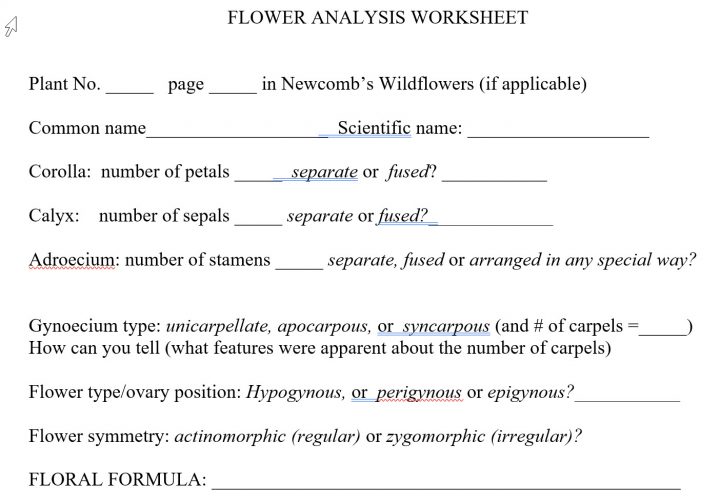
Please replicate this on your web page for the 8 flowers you have found. Include at least one photo –the closer the better but try to stay in focus –and include the same info as the handout. We’ve made a template for your web page that has a placeholder image and the text of the flower analysis worksheet. It looks like this (repeated 8 times):
FLOWER ANALYSIS WORKSHEET
Flower #1
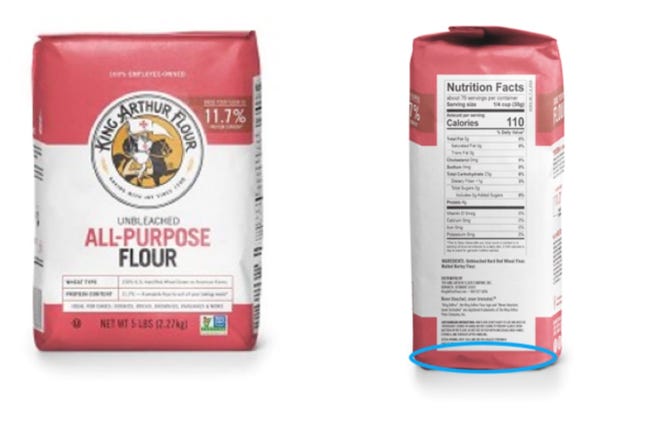
Not that kind of flower!
(Puns don’t quite work in writing, do they?)
This flower was found here (location and habitat/environment):
It is on page _____ in Newcomb’s Wildflowers or page ______in( Petrides Trees & Shrubs (if applicable).
Common name_______________________________ Scientific name: ________________________________
Corolla: number of petals _____ separate or fused? ___________
Calyx: number of sepals _____ separate or fused?_____________
Adroecium: number of stamens _____ separate, fused or arranged in any special way?
Gynoecium type: unicarpellate, apocarpous, or syncarpous (and # of carpels =_____)
How can you tell? (Cite the features were apparent about the number of carpels.)
Flower type/ovary position: Hypogynous, or perigynous or epigynous?___________
Flower symmetry: actinomorphic (regular) or zygomorphic (irregular)?
Additional distinctive features: _________________________________________________
Create this form by opening and then copying the text in this little .txt file:
FLOWER ANALYSIS WORKSHEET (link)
…and, because it is html code (eek!) pasting it into your page using the “Text” editing function toggle up at the top right. Afterwards go back to “Visual” (phew!). To replace the silly flour with a serious flower, hover over it, see the pen icon that allows you to edit the photo and follow the prompts to replace it (alternatively, just delete it and add your own).
A sample flower analysis can be seen on Dr. Klips’ web page HERE (link)
Have fun with this assignment, which is due Friday, May 22.
Note: While we are indeed studying the wild flora of Ohio, some ideal “flower parts” subjects might be garden plants because they tend to be showy-flowered, and may be even better than some wildflowers for learning flower structure. Ideally all 8 will be wild-growing plants, but for this activity, up to half can be cultivated ones. (Do include their names though.)
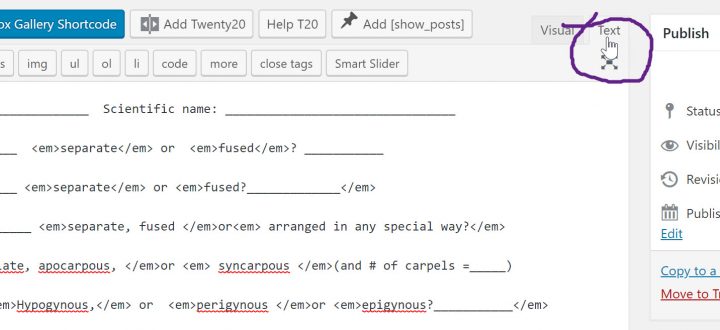
WEEK 1: LECTURE REVIEW MATERIAL
INTRODUCTION TO THE PLANT KINGDOM
WEEK 1: DENDROLOGY (trees) WEB PAGE ASSIGNMENT
Due Sunday, May 17 (credit 20 pts.)
Tree Assignment Content Guidelines: For context and inspiration, read this article in a recent New York Times (LINK). Cite and expand upon the points that Popkin makes in your tree page.
This week we will apply and extend the tree identification skills that we learned last week. Go out into the world and discover 8 wild (not cultivated) broad-leaved (not conifer) trees. Identify them to species using your Peterson’s Field Guide to Trees and Shrubs. At least half of them must belong to different genera than the 8 we learned in class. Photograph your 8 trees close enough up (close up enough?) (up close enough??) (up with enough closeness???) to see the features that allow it to be recognized for what it is. Provide one or two photos of each tree –perhaps one showing the overall shape and form, and definitely one showing leaf details.
Provide the following information about each tree:
-
-
- common and scientific names, the latter written properly in terms of capitalization and italics.
- a written description of the pertinent identification features: leaf arrangement, complexity, and other traits that, taken together, distinguish that particular species.
- where you saw the tree, both the site locations and the habitat (the type of environment, i.e., swamp forest).
- for each tree, provide at least one interesting statement about the tree’s human or natural ecology that you hadn’t known before. Mention the source of your information and, in the case of internet sources, provide a hyperlink to that source.
- have fun with this; be creative, and be sure to compare your experiences with the ones recounted by Gabriel Popkin in the “Tree Blindness” article you read.
-
Tree Assignment WordPress Guidelines: We want pages (not posts) and we want those pages to be formatted neat and simple just like our HOME page (single column with no sidebars; info bar hidden; page title hidden; comments and trackbacks not allowed). Therefore please do NOT create a fresh new page for each new topic. Instead, “clone” your HOME page, and rename it, as follows.
Clone your home page by using the “Copy to a new draft option at the top of the page while you are in “edit” mode. (Note: this can also be done in the “Pages” section of the Dashboard, but this way is a bit simpler.)
Change the name of the page and it will automatically change the URL (“permalink”) to whatever you named it, in this case, “TREES.” Don’t forget to “Publish.”
Delete what’s there and add new stuff being sure to use the text selection options (Header 2 for headers and Paragraph for everything else works well.) Note the options for boldface, italics, and the ability to add links.
Adding media (photos) is pretty easy; just click the “Add Media” button and find the photo you want to add.

Add Media.
You can upload photos of any size (pixel dimensions) and WordPress automatically creates a set of lower-resolution versions. Note the options displayed on the right-hand side of the media page. In most instances, you will want to use “Large” size (800 px wide), centered. You can add a caption when you upload, or afterward while you are editing your page.
WEEK 1: TREES!
Here is a key to trees from an oldie but goody field guide.
tree key low resWEEK 1…LAUNCH WEB SITES
Due Thursday (midnight) May 14 (credit: 10 pts.)
Let’s begin this adventure by launching our web sites. Your web site is a subdomain of this very web site (www.ohioplants.org). The Universal; Resource Locator (URL) for your site is the genus of one of our favorite plants (dot) ohioplants.org. For convenience, see below, there are links to your sites. To EDIT your site, simply enter into the browser bar your site name with “/wp-admin” added to it. To log in, enter the username and password you were sent in a recent email. Welcome!
Personalize your HOME page:
Add a header image and introduce yourself!
Header image. Navigate Dashboard -> Appearance -> Header. Take or obtain a photo you like, crop/resize it to the recommended pixel dimensions, and put it in place of the beautiful mountain scenery that sadly doesn’t look anything like Ohio. (Details below.)
Add a new image, following the prompts. The image adding procedure allows cropping, so the header picture doesn’t have to already be 1100 x 200 pixels, but you might want to start with an image with those dimensions.
Introduce yourself (first name only) on your homepage. Here’s a chance to let your classmates and instructors learn about your botanical interests. Because these web sites enable you to do writing for the real world, to foster comfort and privacy we are encouraging you to use your only first name (or an alias?…Hi, I’m Trematodon!”).
The editor has two options –“visual” and “text.” “Visual” is quite WYSIWYG and works like a word processor, and is the mode you’ll probably always use unless you really like hypertext markup language. Delete the text (“Introduce that is currently on your home page. Please do not delete this page and make a new one, but rather edit (i.e., add content to) this page.
Interpret/explain your “coat of arms.” Coats of Arms: As part of your introduction to us and your colleagues, you should create a “coat of arms” that is representative of your background and interests. Here’s the template for that, to be followed flexibly for fun.
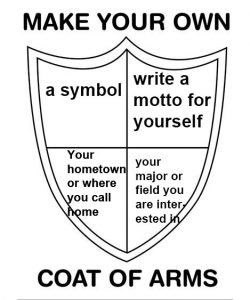
Add a few fun biographical tidbits (or many, if you are so inclined) to this page. Suggestions: your academic and personal interests and career goals, your favorite plant, aspects of the natural world that most interest you, a definition of “Botany,” what you hope to learn from this class, etc. Have fun with this!
Clone your HOME page when you make new pages.
Note: For all the succeeding web assignments, you will make separate pages (PAGES, not POSTS!) by going to “all pages” on the dashboard (two little pages icon) and creating a “clone” of your home page. Because the home page is formatted in the preferred manner (one column, no sidebars, no comments), please do not create new pages from scratch. Instead, clone your homepage, rename it, and replace what’s there with your new content.
Again, for all the succeeding web assignments, make separate pages (PAGES, not POSTS!) by going to “all pages” on the dashboard (two little pages icon) or, alternatively, selecting “Copy to a new draft” on the menu bar at the top.
















